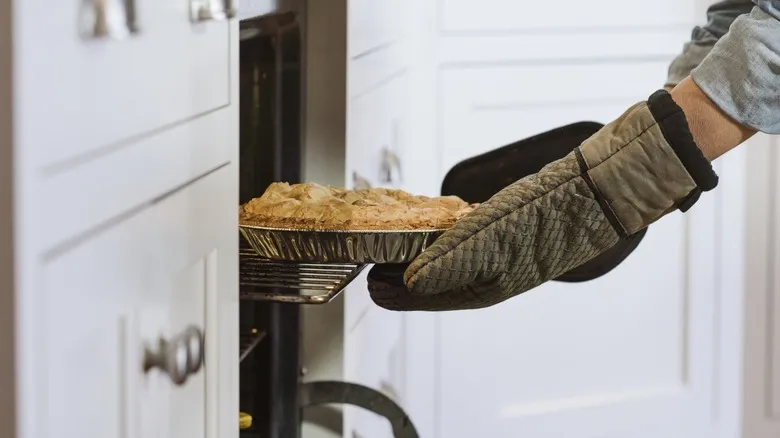Metal pie pans

Commonly referred to as tins, metal pie pans are a favorite among many bakers for achieving the flakiest and crispiest crusts. They are relatively affordable and excel at conducting heat quickly and efficiently, making them ideal for recipes that require blind-baking, such as Boston cream or key lime pie. Additionally, metal pie pans perform well at various temperatures, allowing you to safely broil, freeze, or transfer your pie from a hot oven to a cold refrigerator as needed.
However, there are a few considerations to keep in mind when purchasing a metal pie pan. It's advisable to choose a light-colored metal, like aluminum, since darker metals can lead to over-browning of delicate pie crusts. It's best to avoid nonstick pie pans entirely; a well-crafted, properly baked crust will easily release from the pan, and nonstick surfaces can complicate this process. Moreover, since most pies are cut in the pan, using a nonstick option can easily damage the coating. If you're making a pie with a crumb crust, nonstick pans can be particularly frustrating, as the crust may not adhere well to the sides.
Choose aluminum or aluminized steel over stainless steel, as they are better heat conductors. The 9-inch aluminized steel pie pan from USA Bakeware is sturdy and highly rated. If you prefer disposable options, KitchenDance heavyweight aluminum foil pie pans are durable enough to handle heavy fillings.
Ceramic pie pans

Undoubtedly the most attractive—and also the priciest—option, vibrantly adorned ceramic pie plates make a striking impression at any gathering. Among the three types of pie pans, ceramic takes the longest to heat up but holds onto heat effectively once it reaches the desired temperature. When using ceramic pie pans, it's advisable to place your pie in the lower section of the oven, closer to the heat source. Due to its lower initial conductivity, ceramic pie pans are ideal for longer-baking double-crust pies, where the bottom crust often browns before the top crust and filling are fully cooked.
However, because of their decorative appeal, ceramic pie pans are often larger—deeper and wider than the standard 9-inch pie plate, with a depth of 1½ to 2 inches. These size variations and the material make ceramic pie plates heavier and more cumbersome, which can lead to mishaps. Consider choosing something that is not only affordable and visually appealing but also user-friendly, scratch-resistant, break-resistant, and dishwasher safe, such as the Emile Henry 9-inch pie dish.
Glass pie pans
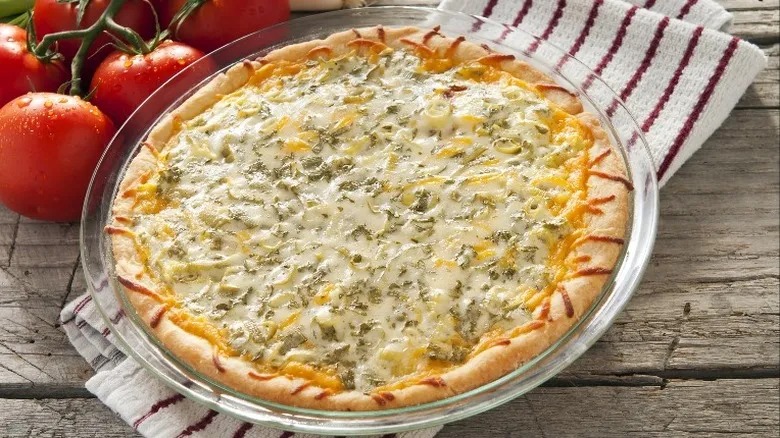
Among the three options, glass pie plates are arguably the most versatile and are a favorite for a wide variety of pies. Similar to ceramic, glass acts as an insulator and takes longer to reach the desired temperature. However, one advantage is that you can easily monitor the bottom crust as it bakes to a golden finish, which is particularly helpful for novice pie bakers. Additionally, glass pie pans are generally affordable and can compete with metal pans in terms of cost.
Typically, glass pie pans are made from either tempered or borosilicate glass. Both types distribute heat evenly, but they do require more time to cook pies compared to metal pans. Borosilicate glass, commonly known as Pyrex, is more resistant to breaking when dropped or subjected to extreme temperature fluctuations than other glass types. Nonetheless, caution is still necessary, as glass can shatter, creating a hazardous situation along with a ruined pie. It’s important to let hot glass pie plates cool to room temperature before placing them in the fridge, and vice versa for refrigerated plates going into the oven.
Pyrex 9-inch glass pie plates are particularly favored by bakers for their moderate aesthetic appeal and versatility in various baking scenarios. While some may find them a bit shallow, they are reasonably priced and durable over time.
Silicone
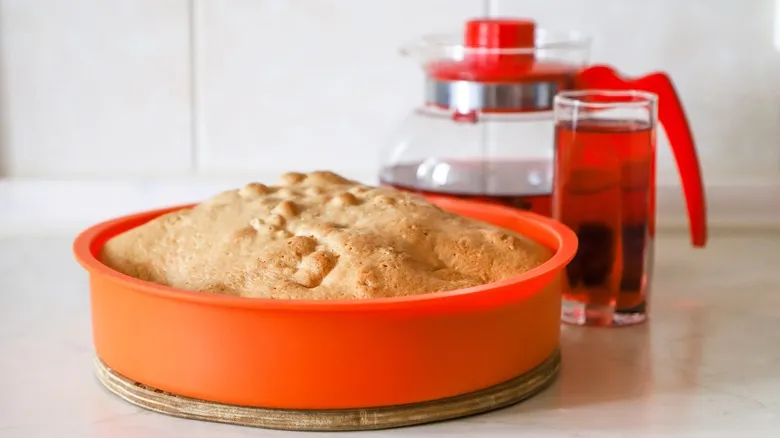
Silicone has emerged as a popular tool in bakers' kitchens, and it's easy to understand why. Its most notable feature is its reputedly nontoxic, nonstick surface, which allows for effortless release. However, similar to nonstick metal pans, if your crust is prepared correctly, sticking should never be a concern with any pie pan. Additionally, silicone is lightweight and remarkably easy to clean, whether by hand or in the dishwasher.
One of the main drawbacks of silicone in pie-making is its flexibility. To transfer pies to the oven or to keep a crust intact in a silicone pie pan, you need a sturdy surface to support the silicone. Furthermore, silicone is known for its poor heat conduction, which can result in crusts that fail to brown or, worse, turn out soggy.
On the other hand, silicone excels when it comes to mini desserts, including pies. Since these are typically placed on larger baking sheets for easy transfer, the flexibility of silicone becomes less of an issue. Moreover, silicone is excellent for creating intricate designs, making it an ideal choice for small tarts and pies with detailed crusts. The Webake silicone mini quiche and tart pans are perfectly sized for individual servings. Plus, silicone can seamlessly transition from the oven to the freezer.
Recommended
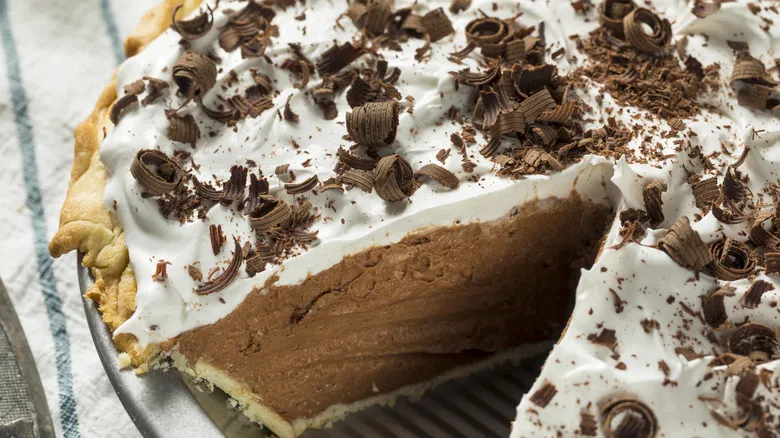
The History Of How French Silk Pie Became A Staple American Dessert

What States Produce The Most Rhubarb In America?
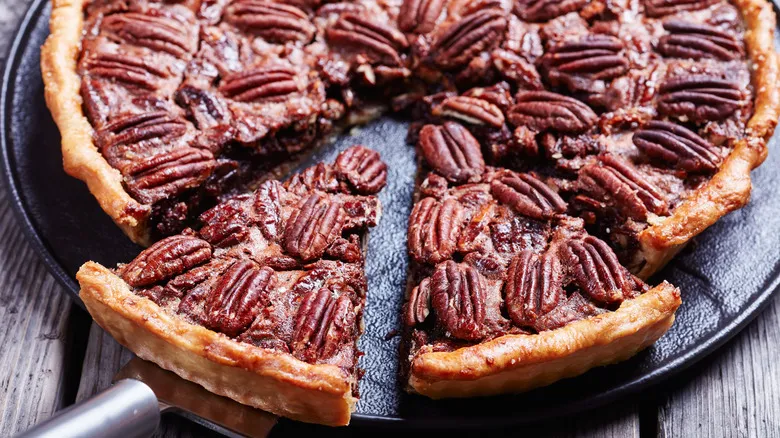
Give Pecan Pie A Luscious Pudding-Like Texture With Chocolate
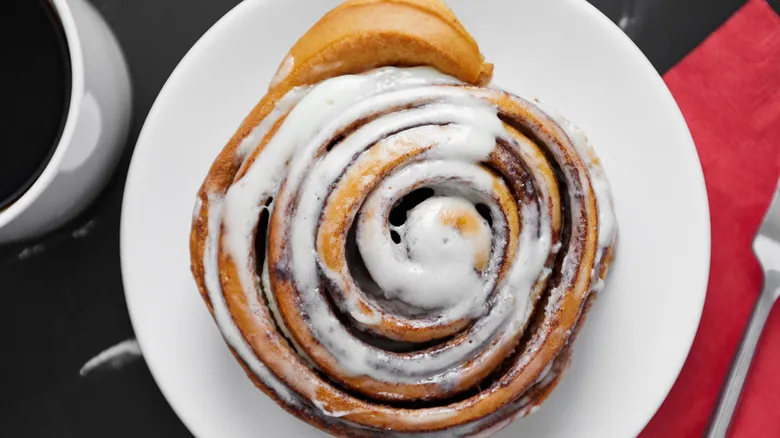
How To Bake Cinnamon Rolls To Give Them A Croissant-Like Texture
Next up

